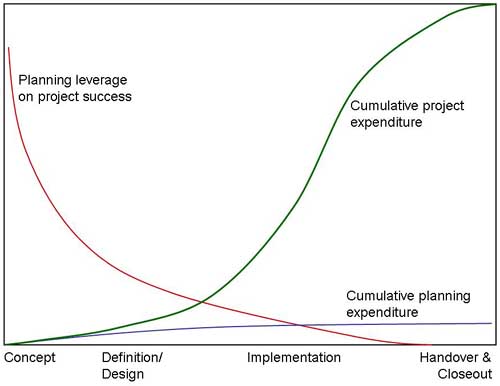I have just seen some information on a 2007 survey undertaken by the PMO Executive Council (part of the Corporate Executive Board: http://www.executiveboard.com/). This snapshot survey, Attributes of a High Performance PM – 2007, found very little correlation between project management certification and project management effectiveness, or the number of years a person has been in project management roles and project management effectiveness.
The survey found the drivers for project management effectiveness were behavioural attributes such as problem solving and the ability to relate effectively with key stakeholders. Whilst many people may initially want to disagree with these findings, they are consistent with many other trends and on reflection quite logical.
Firstly, the survey did not look at the PM’s track record, merely the time the PM had been in project roles. It is reasonable to assume highly effective PMs will have a relatively short PM career and then move on and up the organisational hierarchy. Less effective PMs are likely to stay in their PM role focused on process and technology.
Secondly, whilst PM credentials such as PMP remain very effective tools in the job market; passing your PMP does not make you an effective project manager (see more on PMP). The PMP knowledge framework gives you the knowledge to be an effective project manager. Being effective requires you to become a competent project manager.
Competency has three aspects, knowledge, skills and behaviour:
- what you know,
- your ability to apply the knowledge (essentially personality traits) and
- your willingness to use the skills effectively (essentially behavioural traits).
Qualifying project managers based on behavioural competencies is in its infancy. The Australian Institute of Project Management (AIPM) has recently moved its professional certification program (RegPM) from a procedural view of competency (eg, do you have a project schedule – the artefact?) to a behavioural view of competency (how effectively do you manager the schedule on your project?). This is ground breaking work.
PMI have adopted a different, but similar approach in their program management certification (PgMP) with a 360 degree review testing how effective the candidate is in the workplace. These trends have a long way to go but are likely to be the next step in project certification.
Of more direct interest in the short term is the demonstrated link between how effectively a project manager engages with his/her key stakeholders and high performance outcomes. These skills are a core element in a number of workshops we run including Successful Stakeholder Management and The Science and Art of Communicating Effectively, and are supported in part by our Stakeholder Circle® methodology and tool set.
Learning how to apply the skills in the workplace though is not quite as simple as attending a workshop or buying a set of tools. Soft skills are very hard to acquire and use. My feeling is they are called ‘soft’ because they change shape and texture depending on the environment they are being applied within. The calculations for EV or CPM are universal; the best way to engage a senior stakeholder is totally dependent on the culture of the organisation. Some elements remain consistent (eg, the need for an effective relationship) but the way this is achieved varies.
Developing these advanced skills that are the attributes of high performance project managers requires context sensitive coaching and mentoring rather then formal courses (see: Executive PM Coaching & Mentoring). Ideally organisations seeking to develop high performance PMs will move beyond certification towards implementing internal mentoring systems – it’s the best way to ensure they are contextually relevant.
However, where we differ from the survey findings is that we believe certifications such as PMP are still relevant. Passing a PMI credential such as PMP or CAPM (see more on the PMI credential framework) is a positive demonstration of the initial knowledge component of competency; it’s just that knowledge alone is not sufficient.
Achieving this next level of high performance PMs will also require organisational competence in at least two domains. Process competence measured by tools such as PMI’s OPM3® framework and relationship management maturity measured by tools such as my SRMM® framework.
These are definitely interesting times for our profession.



